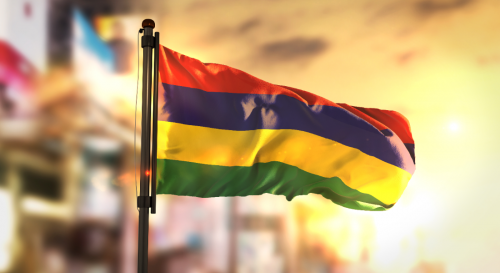
Intellectual Property - A story of two SMEs
Every year, since the year 2000, World Intellectual Property Day is celebrated on April 26. Every year, the World Intellectual Property Organization chooses a theme for this celebration. In 2021, the chosen theme was the importance of intellectual property (IP) for small and medium-sized enterprises (SMEs), when they bring their ideas to the market.
IP is not necessarily decisive in the success of an SME. It is possible for an SME to have business success without protecting its products, and it is also possible for an SME to protect its products and not have business success. However, when an SME introduces a product to the market, its behaviour in relation to IP can be decisive.
The cautionary story of two fictional SMEs told below, tries to highlight this importance.
Intellectual property rights
Two SMEs, SME-A and SME-B invest, separately, a few thousand euros in the development of a footwear product. The products of the two SMEs are innovative sneakers.
SME-A’s sneakers allow the user to receive information about their activity during use, such as distance travelled and speed. This and other information is received by the user in an app created by SME-A. The SME-B’s sneakers have a technical solution that allows the user to have information about their way of walking and running, also in an app created for this purpose.
In addition to these technical innovations, unique designs are created for both shoes. Finally, the two SMEs create a brand for their new product. The products are ready to be sold. SME-B, impatient to cover the costs it had with the development of the product and perhaps start to make a profit, introduces the product to the market. The product is an immediate success and SME-B is satisfied.
On the other hand, SME-A, before introducing the product to the market, seeks assistance from a trademark and patent attorney (TPA) to protect its product. The TPA informs SME-A that its product includes several intellectual assets that may be subject to intellectual property protection. The technical solution that allows the user to be informed of his activity with the sneakers through the app is an invention, so it can be patented if it is new and sufficiently inventive in relation to the inventions already known in the world. The design of the sneakers (their appearance) can be protected by registering a design, as long as it is new and has individual character in relation to any design already known. The texts, music and other content created for the app and the app itself, in part, will be protected by copyright, as long as they are new and original. Finally, the TPA indicates that the brand may be protected through trademark registration, insofar as there is no registered trademark similar to the point that the two are confusing for consumers.
Upon hearing all this information, SME-A doubts whether to use more financial resources on this product. The investment in its development was high and it has not yet introduced the product to the market, so it has not yet recovered any part of the investment. These additional expenses may be unbearable.
Meanwhile, SME-B continues to market its innovative product successfully and to profit, without having had any IP costs.

"(...) SME-A may start by submitting applications only in its country, after which it has one year to apply for patents and six months to apply for design and trademark registrations in other countries. International and regional applications will lower costs and procedures times."
Obtaining intellectual property rights
SME-A ends up accepting the TPA recommendations and learns how to obtain intellectual property rights on the identified intellectual assets. With the exception of copyright, which exists from the moment of creation of the works, the remaining intellectual property rights will only exist with the granting, by an administrative entity, of a patent for the invention (technical solution) and of registrations for the design and for the brand. TPA also recommends the registration of works already protected by copyright because, despite the fact that the right already exists, proof of its authorship may be difficult without registration.
SME-A also learns that intellectual property rights are territorial, that is, that a patent granted in a country, only takes effect in that country, so if protection is needed in other countries, different procedures will be necessary for those countries. Design and trademark registrations and patents will be required in these countries.
The costs will be high. However, SME-A is satisfied with the information that the internationalization of the protection may be delayed over time. SME-A may start by submitting applications only in its country, after which it has one year to apply for patents and six months to apply for design and trademark registrations in other countries. International and regional applications will lower costs and procedures times.
SME-A decides to proceed with the services proposed by the TPA. They begin by conducting searches to assess whether the patent and the design and trademark registrations will be accepted. The patent and the design registration will, in principle, be granted. However, they discover that there is already a similar trademark, so the trademark registration shall be refused. SME-A creates a new mark that can be registered. Fortunately, SME-A had not yet had marketing costs in relation to the non-registable mark.
Applications are submitted and, with the provisional protection they provide, SME-A finally introduces the product to the market.
The exercise of intellectual property rights
The two SMEs market their products which, although competing, are both successful. The SME-B product has a larger market share, as it has been on the market for a longer time. SME-A, in addition to having a lower market share, continues to have costs with the maintenance of the intellectual property. Every year it must pay the patent maintenance fee, every five years the design registration fee and every ten years the trademark maintenance fee will have to be paid. SME-A continues to doubt whether the costs with IP are worth it.
However, an international company in the footwear sector, observing the success of the two SME products, intends to introduce a similar product on the market, preferably by combining the two technologies, choosing one of the sneaker design and using its prestigious international brand.
The international company conducts audits of the intellectual property of the two SMEs and discovers that it will be able to freely use the non-patented technology and the unregistered design of the SME-B. On the contrary, it will not be able to use, without the authorization of SME-A, its patented technology and its registered design.
The international company presents a proposal to SME-A to acquire its patent on the technology of the sneakers and the registration of the design or, for a lower price, an exclusive license to explore the invention and design. With the transfer, the patent and registered design rights would definitively be transferred to the international company. With the license, the rights would continue to be SME-A’s, which would receive royalties in exchange for permission to the international company to use these intellectual assets. Considering the proposed values, SME-A accepts the transfer proposal. Also, the copyrights on the app and its contents are transferred (economic rights), and they are for a higher value than they would be if they were not registered.
SME-A uses the money received to reinvest in the creation of new innovative products. Additionally, it maintains its registered trademark, which has acquired some notoriety in the market and which SME-A will be able to use in the new products it will create.
"The use of the invention by the international company cannot be prevented because the invention has not been patented"
SME-B observes its market share decreasing very rapidly, with the entry of the international company’s product in the market, which combines SME-B’s technology with the technology acquired from SME-A. SME-B also realizes that other companies sell sneakers with a design similar to its own.
SME-B finally uses an IP lawyer to act against the imitation of the invention and design. To SME-B's shock, the lawyer informs that the probability of being able to prevent those uses is practically nil. The use of the invention by the international company cannot be prevented because the invention has not been patented and can no longer be, as it has already been disclosed. Similarly, the use of the design by several companies cannot be prevented either, because it has not been registered, and the SME-B does not have any exclusive use rights over it. It was for this reason that the international company was not interested in using the SME-B design: any company will be able to use it. Due to the dissemination and commercialization, the design can no longer be considered new, so it can no longer be registered.
When sales are almost no longer enough to pay expenses, SME-B receives a letter. The letter is from a company that has learned that SME-B has used a trademark identical to its registered trademark during the past three years. For having infringed its trademark right, the company seeks compensation from SME-B. SME-B never registered the brand or even checked if there was already an identical registered trademark before starting to use it. The company is entitled to compensation from SME-B. SME-B declares itself insolvent.
The managers of the defunct SME-B, after some indignation, understand, finally, that the general rule is the freedom of imitation and that this freedom is only excused when there are intellectual property rights (or in some very specific situations of unfair competition). Meanwhile, SME-A is no longer an SME.
Currency Info
Final charges will be made in USD.
Currency conversion is for information purposes only and accuracy is not guaranteed. Overseas customers are encouraged to contact their bank or credit card provider for details on any additional fees these institutions may include for currency conversion.
Territory List
There are no results for your search.
- Africa
- Algeria
- Angola
- Benin
- Botswana
- Burkina Faso
- Burundi
- Cameroon
- Cape Verde
- Central African Republic
- Chad
- Comoros
- Congo (Republic)
- Côte d'Ivoire
- Democratic Republic of the Congo
- Djibouti
- Egypt
- Equatorial Guinea
- Eritrea
- Eswatini (Swaziland)
- Ethiopia
- Gabon
- Gambia
- Ghana
- Guinea
- Guinea-Bissau
- Kenya
- Lesotho
- Liberia
- Libya
- Madagascar
- Malawi
- Mali
- Mauritania
- Mauritius
- Mayotte
- Morocco
- Mozambique
- Namibia
- Niger
- Nigeria
- Réunion
- Rwanda
- Sao Tome and Principe
- Senegal
- Seychelles
- Sierra Leone
- Somalia
- South Africa
- South Sudan
- Sudan
- Tanzania (mainland)
- Togo
- Tunisia
- Uganda
- Western Sahara
- Zambia
- Zanzibar
- Zimbabwe
- Africa (OAPI)
- Africa (ARIPO)
- Other
- East Timor
- Macao
- Maldives
- Portugal
- European Patent (EPO)
- European Union Trademark (EUTM)
- International Trademark (Madrid System)
- Patent Cooperation Treaty (PCT)




